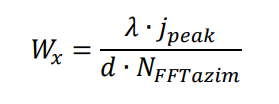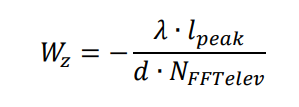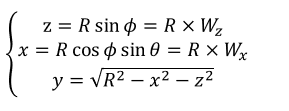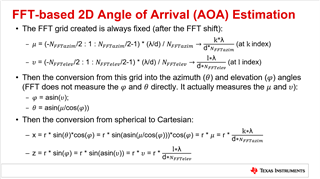Hi team,
I'm reading our docs in mmwave L sdk and I notice such 2 questions in our mmwave demo documentation:
1. In our doc, we calculate x, y z in such ways




As we know, x=r*cos(Φ)*cos(θ), y=r*sin(Φ)*cos(θ), z=r*sin(θ), so, can you tell me why Wx=cos(Φ)*cos(θ) and Wz=sin(θ)?
2. In position interpolation, we use 2 formulas to calculate the bias


In the doc's reference, they say the formula2 is statistically biased and performs poor in noise. So why we still use it to calculate δa?





